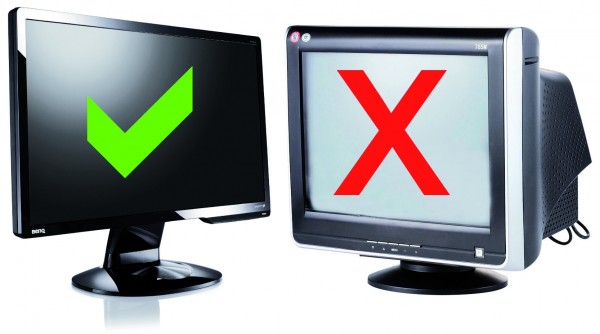
Computer monitors are available in LCD (Liquid Crystal Display) and CRT (Cathode Ray Tube) types. The CRT monitor types have been in the market for so long; they had been known as standard for a long while before the LCD display models came in. LCD monitors were very expensive when they were firstly announced in the market; they were assumed to have more merits over the CRT types. Of late, the LCD models have taken over the computer desktop display market in totality and are sold at reasonable prices for everyone to afford.
The computer screen is an essential part of a desktop computer; it’s relatively expensive compared to many other computer parts. This is why there is need to seek relevant advice before purchasing an appropriate model… the guidelines below will explain the various pros and cons in LCD as well as in CRT screens:
CRT Screens
Of late, many computer manufacturers have cut down the production of CRT screens due to the low market demands. A few extremely high end or absolutely low end computers are packaged with CRTs.
Advantages
- Have greater color contrast ratios and depths. Many graphic designers use the CRT type of monitors because of the good color depths they offer.
- They are able to scale cheaply to various resolutions; this is termed as multisync. CRT screens can be adjusted to lower resolutions while maintaining picture clarity.
- They also offer high refresh rates compared to LCDs.
Disadvantages
- CRTs are very heavy in weight and large in size. This can foster a limitation to those who have small office spaces.
- They consume high amount of energy thus subjecting users to high power bills.
- They generate heat excessively.
- They cause more eye fatigue
LCD screens
Many consumers opt to go for LCD screens over CRTs. LCD screens are highly improved and have splendid features.
Advantages
- They are light in weight and small in size. Experts say that they are up to 80% lighter than CRTs.
- They have less eye effects on users due to the combination of low intensity and constant display of pixels. They do not flicker as much as CRTs causing less headaches and eyestrains.
- They consume less power thus they are energy efficient.
Disadvantages
- They have a fixed native resolution which produces blurry images at times.
- Some LCD models have low color clarity and low response times.
- At times, LCDs display motion blur on fast moving objects and images.










Comments